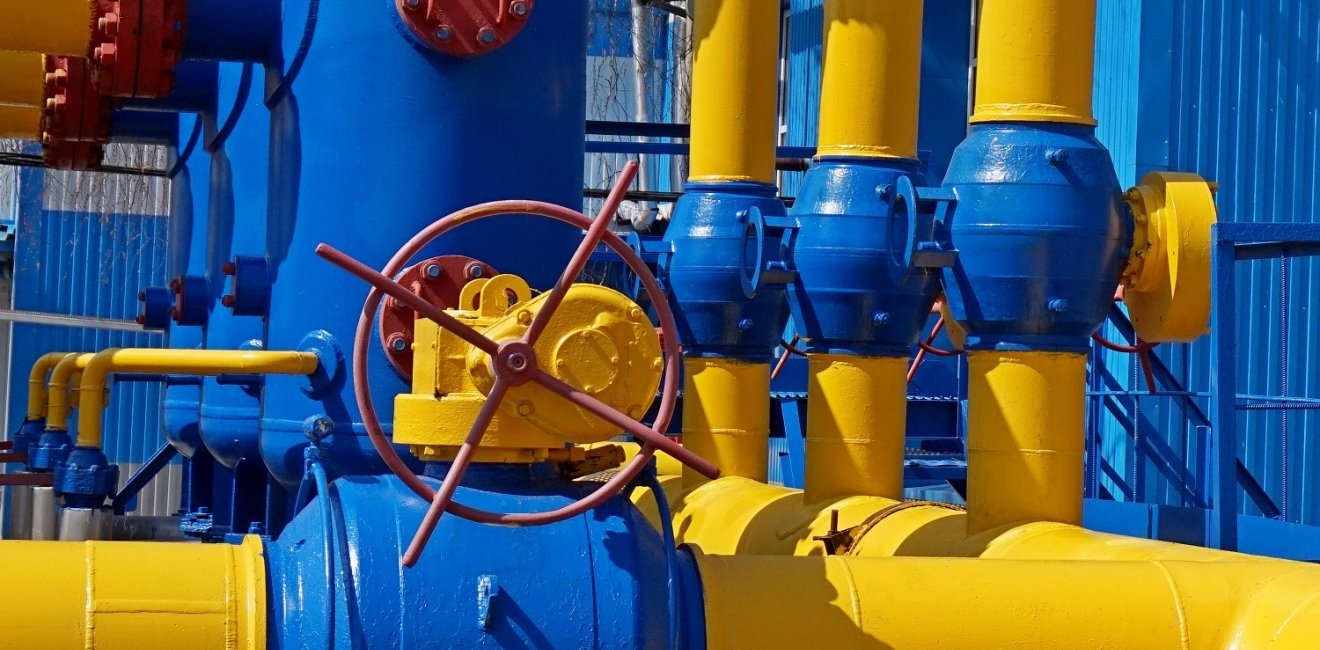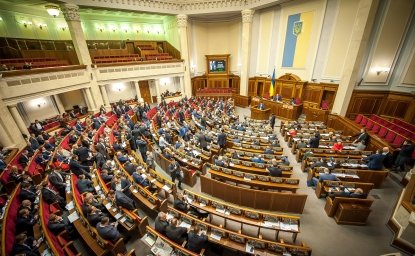
A blog of the Kennan Institute
On the morning of January 1, 2025, Ukraine’s gas transmission system operator stopped the transit of Russian gas to Europe. This stoppage took effect because the five-year contract on transiting Russian gas, established in 2019, had lapsed. The future of gas transit remains uncertain, yet this decision signifies the impending end of a lengthy transit history and, most likely, the end of Russian gas dominance in Europe.
A Brief History of Russian Gas Transit
The story of gas transit across Ukraine began almost 70 years ago. In the first half of the 20th century, large natural gas deposits were discovered in western Ukraine. With specially constructed pipelines, this gas was supplied to Moscow, Minsk, Chișinău; and westward, reaching the Baltic states. Later, the pipeline system was expanded to deliver gas to Czechoslovakia, Austria, Germany, France, and Hungary.
The discovery of significant gas reserves in western Siberian Russia during the 1960s greatly impacted the gas industry in the Soviet Union and eventually Europe. The Urengoy gas field (first discovered in 1961) began operation in 1978. By that time, Ukraine's gas fields had been depleted. In the early 1980s, developing Siberian gas reserves became a top priority for the Soviet gas industry. Moscow saw an opportunity to enhance both its energy exports and influence in Europe. The existing pipelines connecting the original fields in western Ukraine with European countries and the rest of the USSR served as the backbone for the Soviets’ future gas export system to Europe.
The supply of Soviet gas provided Europe with cheap, reliable energy at a time when the memory of global oil instability—from revolution in Iran to OPEC’s embargo against the United States—was still fresh. The growing European reliance on Soviet energy raised deep concerns in Washington. The US questioned the dynamic of its NATO allies sending revenues to the USSR to fund the Soviet military while those same allies depended on US defense spending and its treaty commitment to defend them from the USSR. Many European states, by contrast, viewed energy supplies from the USSR as crucial to economic growth and stability. Over time, a new narrative emerged: robust economic ties between Europe and the Soviet Union served to normalize relations and to reduce security threats.
The dissolution of the Soviet Union greatly affected this decades-old gas business. Russian gas now had to transit an independent Ukraine. Even so, Russia continued to increase its exports to Europe, with the exported volume rising from 110 billion cubic meters in 1990 to 175 billion in 2020.
The Ukrainian gas transmission system was capable of transporting most of this increased supply, but in the 1990s Russia began constructing new gas pipelines that circumvented Ukraine. This process coincided with Russian efforts to persuade the EU that Ukraine was not a reliable gas transit state. Many times, Russia accused Kyiv of stealing gas; however, this was never proven. In fact, pipeline gas deliveries never stopped due to Kyiv’s decision—even after Russia’s full-scale invasion of Ukraine. By contrast, gas transit to Europe was suspended twice by Russia, better known as the “gas wars” of 2005-2006 and 2008-2009.
In 2003, the Blue Stream pipeline, with a capacity of 16 bcm, connected Russia and Turkey under the Black Sea. In 2006, the Yamal-Europe pipeline, which runs through Belarus to Poland and Germany, became fully operational with a capacity of 33 bcm. Later, the Nord Stream and TurkStream projects added over 80 bcm of pipeline capacity bypassing Ukraine.
In 1998, Ukraine recorded a peak gas transit volume of 141 bcm. A sharp decline started after 2005 with the so-called “gas wars” in the wake of Ukraine’s Orange Revolution. By 2020, transit volumes had dropped to 56 bcm, further decreasing to approximately 15 bcm in 2023 and 2024 even as Russian troops invaded Ukrainian territory.
Impact on Russia
Before 2022, Russia expected a steady expansion of its gas exports to Europe in the pipelines it built to bypass Ukraine. However, in 2022 Russia began undersupplying gas to the EU, expecting that energy blackmail on the cusp of winter would compel the EU to abandon its support for Ukraine. Russia demanded payment for gas in rubles to continue gas supply, contradicting existing contracts. Later, it imposed sanctions on the Yamal-Europe pipeline and interrupted gas supplies through Nord Stream several times shortly before the mysterious explosion destroyed the pipeline.
The result was the opposite of what Moscow intended: Europeans worked to diversify their supplies to other nations and to drastically expand their capacity to use liquefied natural gas (LNG). Europe solved its short-term issue of supply, and in so doing practically eliminated any reliance on Russia for the future.
Europe’s replacing Russian supply did more damage to the Russian economy than any sanctions imposed against Russia. In 2024, Gazprom managed to export about 33 bcm through the TurkStream and 15.4 bcm through Ukraine, compared to 174 bcm in 2021. The drop in export volume to Europe devastated Gazprom’s financial condition—the company incurred huge losses for the first time in two decades. The loss of an additional 15 bcm of exports via Ukraine under the old contract will deal another significant blow to Gazprom’s condition.
Russia is an energy superpower in both natural gas and oil production. Oil is both profitable and simple to export: just put it on a ship and send it to your customer. Natural gas is different. Unless it is converted to LNG, it can only transit to the customer through a pipeline.
Thus, Russia’s gas monopoly does not have many options for rerouting any of its gas supply to other regions. Exports to China will rise in 2025 by 7 bcm, reaching the maximum capacity of the Power of Siberia pipeline (38 bcm per year). Even worse, the gas fields that previously supplied Europe are not easily connected to the network of pipelines that supply China.
Today, Gazprom is considering cutting staff at its headquarters and closing foreign representative offices, and increasing gas prices for domestic gas customers. In other words, losing the European market has proven to be a disaster for Gazprom, and the Kremlin may be forced to look for opportunities to re-enter the European market using any pipeline.
The Uncertain Future of Transit
In recent years, Ukrainian companies received less than $1 billion annually from Gazprom for transit, most of which was used to cover the operational costs of the gas transmission system. With suspended transit, these income streams vanished. Ukraine’s energy regulator increased gas transmission tariffs, which, however, amounted to a small share of the final price of the gas.
The future of gas transit is unclear. On the one hand, last year, Ukraine’s top officials stated several times that Kyiv was ready to transit natural gas, provided that the supply came from Central Asia, not Russia. In 2024, a report suggested that gas from Azerbaijan might be transported through Russia and Ukraine to the EU. However, many criticized the idea, predicting that Russia might mix its own gas with Azerbaijani gas, or that the entire supply might covertly originate from Russia.
Some European states and energy companies would be happy to continue importing Russian gas. In late 2024, the Slovak gas company SPP, along with companies from Hungary, Italy, Austria, and the Czech Republic, addressed the European Commission to assist in negotiating the continuation of Russian gas transit. Slovak Prime Minister Robert Fico has even threatened Kyiv multiple times with possible retaliatory measures if transit is not reinstated. However, the European Commission recently indicated that it did not expect gas supply challenges for the EU and that the region had sufficient new supply routes.
Longterm, what will be the European Commission's stance on Russian gas in general? In 2022, shortly after Russia invaded Ukraine, the EU committed to phasing out Russian energy by 2027-2030. The Commission may eventually contemplate a ban on Russian gas. If that occurs, only Central Asian or Azeri gas could be transported through Russia and Ukraine to the EU. Even if some amount of gas supply from Russia is restored in the future, the era of Russian gas dominance in Europe is consigned to history.
The opinions expressed in this article are those solely of the author and do not reflect the views of the Kennan Institute.
Author

Director, Energy Program, Ukrainian Institute for the Future

Kennan Institute
The Kennan Institute is the premier US center for advanced research on Eurasia and the oldest and largest regional program at the Woodrow Wilson International Center for Scholars. The Kennan Institute is committed to improving American understanding of Russia, Ukraine, Central Asia, the South Caucasus, and the surrounding region through research and exchange. Read more

Explore More in Focus Ukraine
Browse Focus Ukraine
Talking to the Dead to Heal the Living

Ukrainian Issue in Polish Elections


